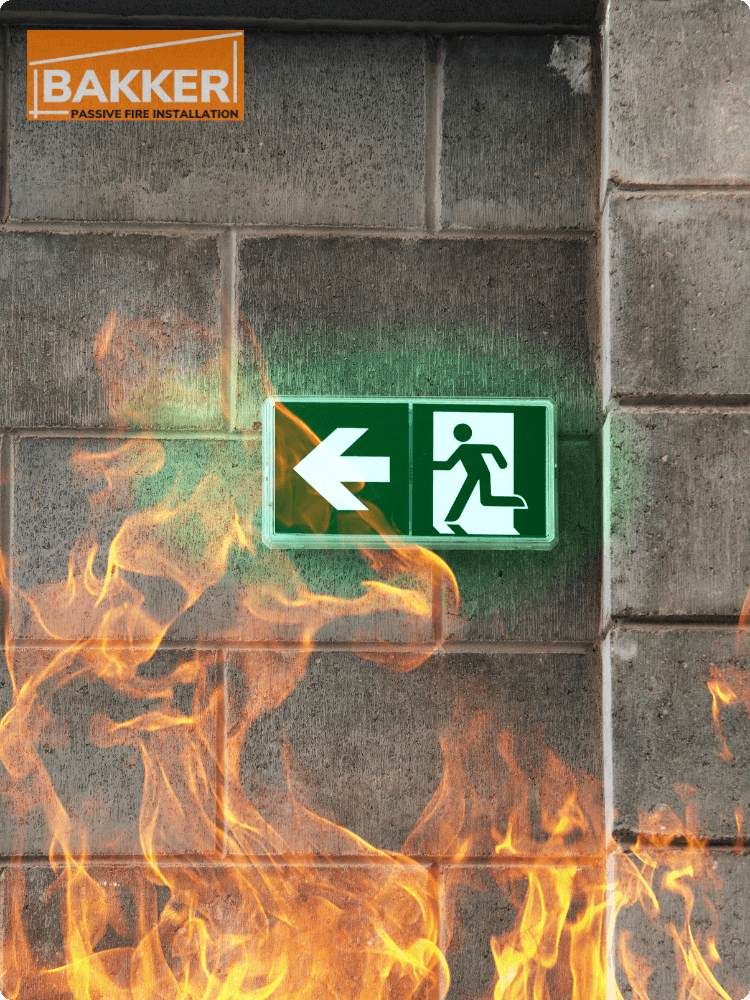
Passive Fire Compliance in NZ
As a property manager, construction professional, safety compliance officer, or facility manager in New Zealand, you know that maintaining a safe environment is crucial.
One aspect you can't afford to overlook is passive fire compliance . It's not just about ticking boxes; it's about safeguarding lives and protecting property.
In simple terms, passive fire compliance ensures that your building is designed and constructed to limit the spread of fire and smoke.
This buys precious time for evacuation and minimises damage. But achieving this compliance in NZ involves understanding and implementing a complex web of regulations, standards, and best practices.
This is especially true for “high-risk designs”, such as hospitals, schools, and retirement homes.
For more information on these high-risk designs, you can check out Auckland Council’s Position Statement AC1825.
Understanding Passive Fire Compliance in NZ
When we talk about passive fire compliance, we are really talking about creating a system.
This system, rather than active measures like sprinklers or alarms, focuses on using building materials and design techniques.
These are in place to compartmentalise a fire, slow its spread, and ensure people can escape safely.
Key Components of Passive Fire Compliance:
Fire-Resistant Walls and Floors:
Using materials with appropriate Fire Resistance Ratings (FRR) to prevent fire spread.
Fire Stopping:
Sealing any gaps or penetrations in fire-rated walls and floors to maintain their integrity. These gaps and penetrations are often required for the installation of vital building services.
It’s important to make sure they are appropriately reinstated with fire-stopping systems that have been tested to AS 1530: Part 4 and AS 4072.
Smoke Control Systems:
Limiting smoke movement throughout the building by strategically placing barriers, and ventilation systems.
Escape Routes and Signage:
Well-defined escape routes that are clear from obstruction with illuminated exit signs and emergency lighting.
For example, the Auckland Council emphasises the need for clear documentation as part of building consent applications when it comes to fire-stopping.
This should include detailed drawings that not only illustrate the fire separations but also call out the required Fire Resistance Rating (FRR). You should also include details about the separation construction.
Navigating Building Codes and Regulations
At the heart of passive fire compliance lies the New Zealand Building Code (NZBC). Specifically, Clause C Protection from Fire is your go-to resource.
It outlines the performance requirements buildings must meet to ensure the safety of occupants in the event of a fire.
Compliance with Clause C can be demonstrated through the use of Acceptable Solutions or by using Verification Methods outlined by the NZBC.
However, navigating the NZBC can be tricky.
Consider seeking expert guidance from Bakker PFI, a passive fire installation company, or fire engineer, especially for complex projects.
Practical Steps to Achieve Passive Fire Compliance
There are many practical steps to achieve passive fire compliance. Some of these steps may include good practice guides, housing maintenance, or medium-density housing.
There are also many design resources to help with these steps. It’s also important to note that ensuring compliance will require a team effort and good communication.
Action Item | Description | More Information |
|---|---|---|
Conduct a Fire Risk Assessment | Identify potential fire hazards and risks specific to your building. | Contact a qualified fire safety professional to guide this process |
Review Building Plans and Specifications | Ensure that passive fire protection measures are incorporated into the design. Pay special attention to areas such as firewalls, fire-rated doors, and smoke control systems. | A fire engineer can help interpret and verify these plans. |
Engage Certified Installers and Professionals: | Use certified professionals for installing, inspecting, and maintaining all passive fire protection systems. This helps to ensure compliance with relevant standards and gives you peace of mind knowing the job has been done correctly. | The Auckland Council recommends all passive fire stopping installers, at a minimum, to be registered with the Fire Protection Association of New Zealand (FPANZ) |
Maintain Thorough Documentation: | Keep records of all inspections, maintenance activities, and any modifications made to passive fire protection systems. These records are not only essential for demonstrating compliance with regulations but can be extremely helpful if you are ever required to provide evidence of your fire safety measures to authorities or during building Warrant of Fitness (BWOF) inspections. | A fire engineer can help interpret and verify these plans. |
Don't Forget Ongoing Maintenance and Inspections
Passive fire protection is an ongoing process, not a one-off task.
Regularly inspect your building to ensure passive fire protection measures haven't degraded over time.
Common areas requiring regular inspection include fire-rated doors (check seals and closers) and firewalls (look for cracks or damage, penetrations, and ensure they are properly sealed).
Stay informed and consider attending seminars, workshops, and webinars hosted by organisations such as BRANZ to remain updated with changes to legislation or new approaches to fire safety.
FAQs About Passive Fire Compliance
What is passive fire protection in NZ?
Passive fire protection refers to built-in safety measures in a building's structure to limit the spread of fire.
Examples include fire-resistant walls, fire stopping within concealed spaces to reinstate the fire rating of the wall, and smoke curtains.
What is meant by passive fire protection?
Passive fire protection aims to contain a fire, prevent it from growing rapidly, and limit the spread of smoke to enable safe evacuation and reduce damage.
It differs from active systems like fire alarms or sprinkler systems.
What are examples of passive fire safety measures?
Common examples include fire-resistant walls and floors, fire doors with self-closing devices, intumescent products, fire-rated glass, smoke barriers, and fire-stopping solutions applied within the concealed space of a fire-rated wall or floor to ensure the fire rating can be achieved.
What is a passive fire inspection?
This type of inspection focuses on evaluating the condition of all passive fire protection elements in a building.
This might include visually checking fire-resistant construction for damage or deterioration to ensure compliance.
This helps identify weaknesses or areas where maintenance or repairs are needed to maintain compliance with building codes.
These inspections are conducted by trained professionals who can then recommend remedial actions, if required.
Wrapping Up
Staying on top of passive fire compliance in NZ might seem like a lot to handle.
However, with this practical guidance, you're taking a massive step in the right direction. For additional insights, you can explore seminars offered by BRANZ.
Always stay updated, prioritise safety, and your building, and most importantly, its occupants will be much better for it.
Passive fire compliance, especially in a country as seismically active as New Zealand, is a team effort. It demands communication and cooperation amongst building owners, designers, contractors, and authorities.
Contact Us
Secure your building’s fire safety with Bakker PFI, the industry leaders in passive fire protection.
Contact us today for a comprehensive consultation and quote.
Let our expert team help you enhance your property’s safety and compliance.
Email: info@bakkerpfi.com
Phone: (09) 393-5516
Click here to learn more about our services and discover how we can help you safeguard your property with our professional fire protection installations.
Together, we can build a safer future.


